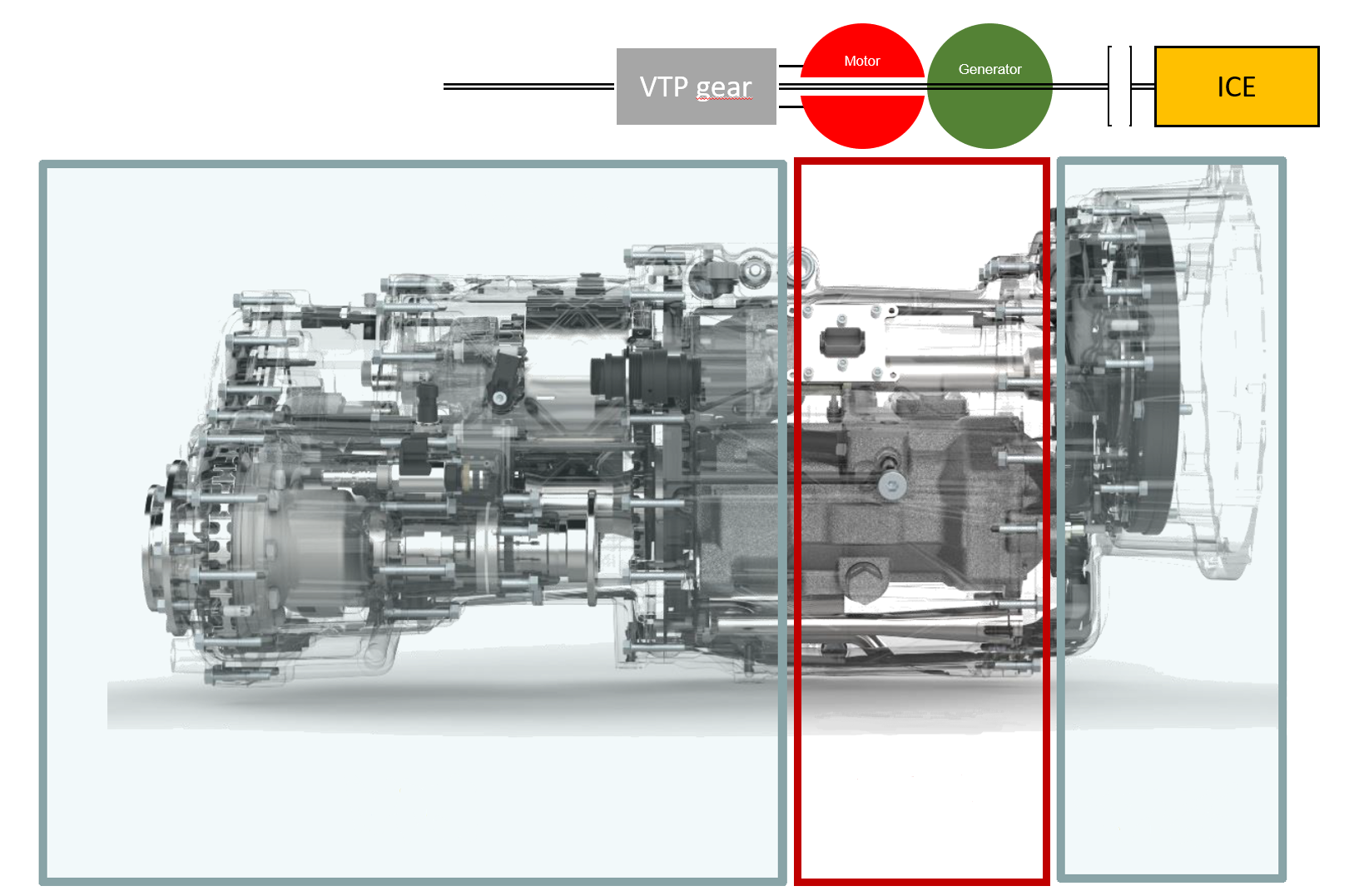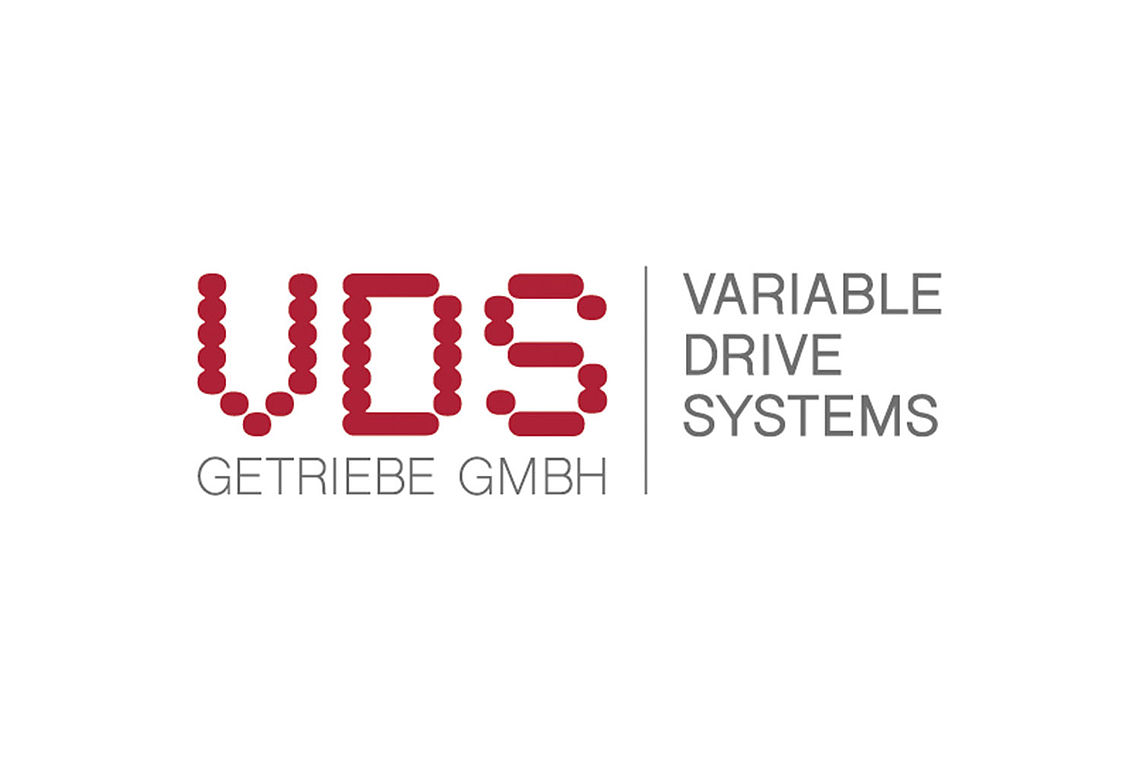Emission-reducing Continuously Variable Transmission (CVT) with an electric variator for municipal vehicles
Illustration of the planned design of the eCVT transmission
Outset
More stringent legislation on pollutant and noise emissions for modern vehicles not only affects individual transport, but also the current solutions in the field of municipal, emergency and utility vehicles. In order to achieve best functionality in transport and work operation, in recent years continuously variable transmissions (CVTs) have been established based on the functional principle of hydrostatic-mechanical powersplit especially in agricultural vehicles.
In these powersplit transmissions, the input power generated by the combustion engine (ICE) is split up into a mechanical and a hydrostatic path. The mechanical path covers several gear ranges and then combines mechanical and hydrostatic power in a planetary gearset at transmission output. This provides high overall transmission ratio on the one hand and high output torque on the other hand while keeping the size of the hydrostatic variator (combination of hydropump and hydromotor) reasonable. CVTs have become state of the art drivelines due to the possibility to control vehicle speed independently from engine speed. Therefore, implements can be operated at the optimum engine speed and the vehicle speed can be adjusted accordingly to achieve best efficiency or work performance (e.g. snow blowing).
Motivation
However, the efficiency and environmental impact of this system is a big issue especially when operated in partial load conditions. Hydrostatic variators are very robust and can cover high power, but there are always significant parasitic losses, which influence the efficiency of the total system. This leads to poor efficiencies and high emissions of the combustion engine especially in partial load conditions.
Objective
The goal of this project is therefore to replace the hydraulic unit with electric machines. Two highly compact, innovative, and cost-efficient electric machines will be used in both generator and motor mode. By linking the ICE with the electric machines and a battery storage, a significant downsizing of the ICE can be achieved. The eCVT unit will provide extended flexibility and makes it possible to cope with short-term overloads and to enable regeneration of kinetic energy during breaking of the vehicle.
All components are specifically designed, manufactured and assembled. In order to ensure adequate cooling of the components, a housing will be developed which provides a correspondingly innovative cooling system. In addition to a functional test of the individual components, their suitability will be verified by simulating load cases of a reference vehicle.
After assembly, the components are tested on the test bench and in a test vehicle in order to allow extensive evaluation of hardware and complex controls.
The expected results of this research project include a reduction in fuel consumption and thus pollutant emissions as well as reduced or minimal acoustic emissions in battery and electric hybrid operation with consistently good vehicle performance.
Facts
- Project start: 07/2019
- Project duration: 30 months
- Funding agency: FFG
- Coordinator: LKR Leichtmetallkompetenzzentrum Ranshofen GmbH











